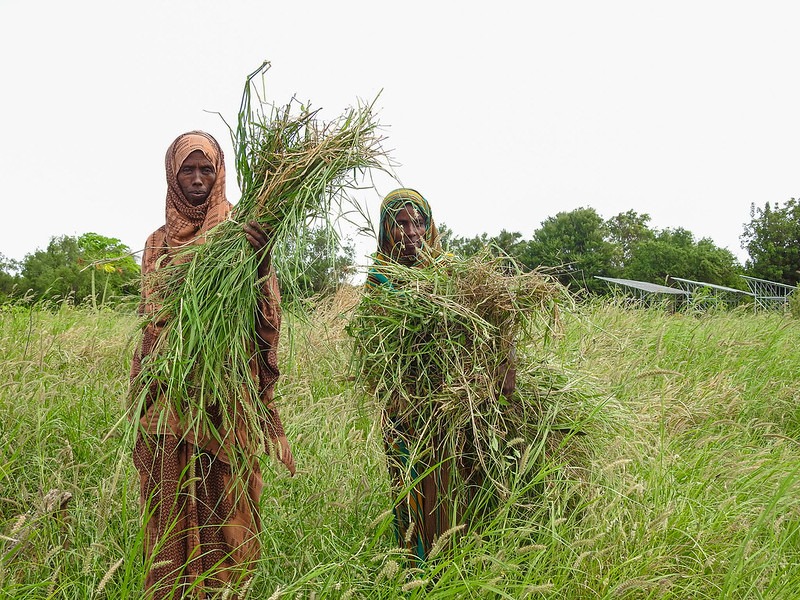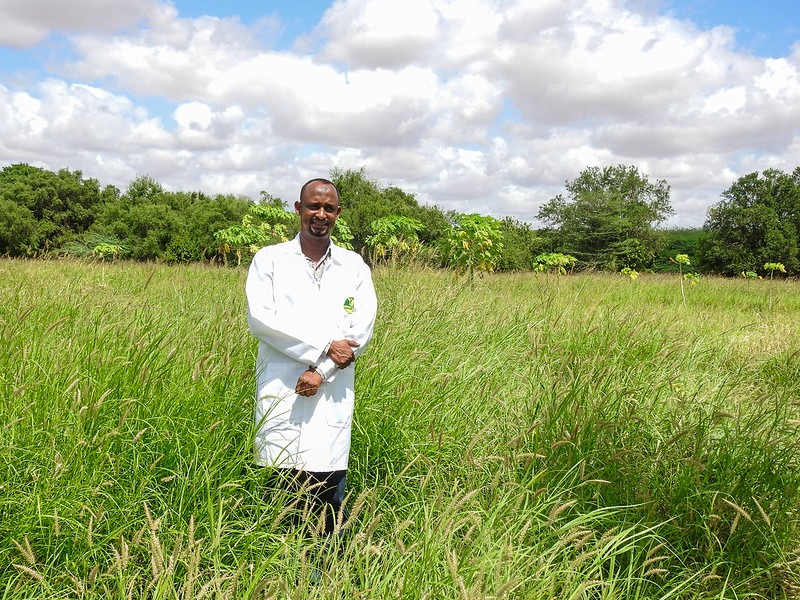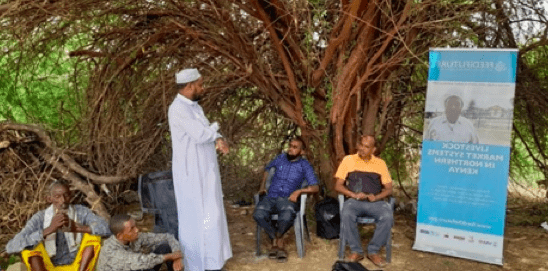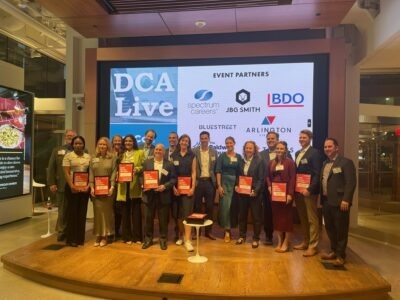
For pastoral communities living in Northern Kenya, livestock production is the dominant livelihood. Healthy and plentiful livestock is a significant source of pride and a continued shared heritage. Now, thinning herds resulting from rains that have failed for four consecutive seasons threaten the very fabric of life in Kenya’s arid and semi-arid lands.
According to the United Nations Office for the Coordination of Humanitarian Efforts, the current drought has left over 4.2 million people in dire need of food, and livestock deaths have surpassed 1.5 million.
The rains have not fallen for three seasons in Garissa County, a mostly arid area with a desert-like terrain. A perennial drought, the COVID-19 pandemic, and macroeconomic conditions resulting in an unusually prohibitive cost of living have converged into compounding challenges for pastoralists.
Farmer Diversifies Production & Utilizes LMS Grant to Expand Operations
Dahir Haret is a 36-year-old farmer from Fafi Sub-County in Garissa County. Like most areas in Northern Kenya, Fafi experiences limited access to clean drinking water, poor infrastructure, incidences of insecurity, and perennial droughts.
With dwindling natural resources, Dahir diversified his income from livestock rearing to include farming. In 2014, Dahir and his family established Kamuthe Young Famers, a self-help group and family farm, utilizing a portion of their 120-acre family land.
With time, small and medium enterprises (SMEs) in the area realized the glaring gap in animal feed, especially during periods of drought. Kamuthe diversified its crops to grow commercial fodder to sell to pastoralists during drier periods and high-quality fodder seeds to sell to other farmers interested in starting fodder production.

To fully integrate fodder production into its operations, Kamuthe approached the Feed the Future Kenya Livestock Market Systems Activity for support. Using a US$149,580 grant against a cost share of US$21,980, the SME constructed a modern hay barn, installed a solar-powered water pump for irrigation, and procured a tractor with a trailer, and hay baler, plow rake, and mower.
Currently, the farm cultivates 10 acres of fruit trees and 40 acres of Boma rods, Cenchrus Ciliaris, and Brachiaria grass. The latter are climate-smart grass varieties with high productivity under intense conditions, increased soil fertility tolerance, and relative freedom from pests and diseases.
“The support we have received from [the Activity] has transformed our business, the locality of Kamuthe, and the county. We no longer buy diesel for the generator, which would have been too expensive to maintain at the current prices. The solar-powered pump functions 12 hours a day, keeping us in business and profitable.”
–Dahir Haret, Managing director, Kamuthe Young Farmers
The SME employs five full-time staff and contracts two laborers, depending on the workload. It makes hay harvest every two to three months and sells each bale of hay for between US$3 and US$4 at the market. During this dry spate, 500 households have depended on fodder from Kamuthe to keep their livestock alive. For a subsidized price, the farm allocates plots to farmers who harvest feed and carry it to their animals, conserving the energy their animals would have spent walking. This has increased herd survival compared to losses during previous droughts.
Because of the farm’s affordable and sustainable production, the county government and the Kenya Agricultural Livestock and Research Organization use the farm as a model and demonstration site. It is also a fodder seed multiplication center supporting farmers interested in venturing into commercial fodder production.

One such farmer group is Fafi Farmers’ Cooperative (FAFCO). The cooperative, which started in 2020, now has a membership of 54 people and operates two farms (100 acres) under fruit and fodder cultivation.
Recognizing the fodder shortage in the county, in 2021, the cooperative harvested 50 kilograms of fodder seed from Kamuthe Young Farmers to establish a fodder farm. FAFCO now has 75 acres under fodder production and estimates a yield of 10,000 bales per quarter. It aims to support 7,000 households.
With the fodder produced at Kamuthe barely scratching the surface of the county’s overall needs, up-and-coming fodder producers, such as FAFCO, are vital to unlocking the feed-related climate risk in Northern Kenya. SMEs like Kamuthe and FAFCO are the next frontier for livestock production and rearing in drier parts of the country.
Learn more about our work in Kenya.
About the Feed the Future Kenya Livestock Market Systems Activity
This is a United States Agency for International Development (USAID)-funded program through the U.S. government’s Feed the Future Initiative that addresses global hunger, food security, and agricultural livelihoods. The objective is to create resilient, competitive, and inclusive livestock systems to reduce the prevalence and depth of poverty, household hunger, and chronic undernutrition in Northern Kenya. The program builds on other USAID investments and deepens USAID’s commitment to Kenya’s Ending Drought Emergencies Framework, with a particular focus on strengthening diverse, viable economic opportunities, human capital, the natural resource base, and institutions that will drive economic development in Kenya’s arid lands. This framework also supports drought risk and knowledge management. The Activity works in the five counties of Garissa, Wajir, Isiolo, Marsabit, and Turkana.






